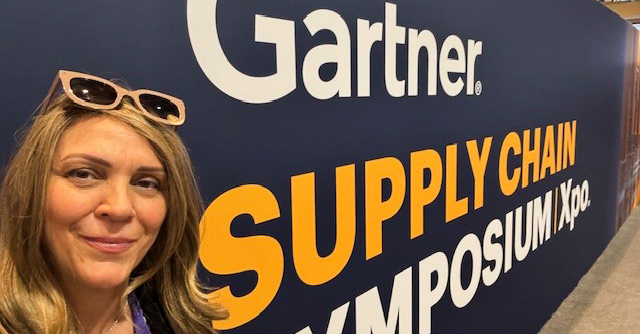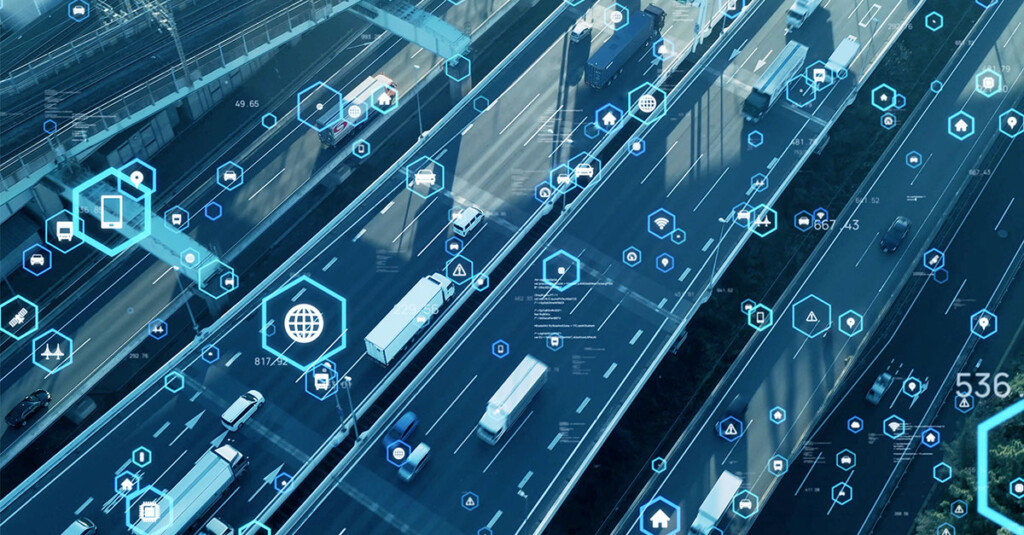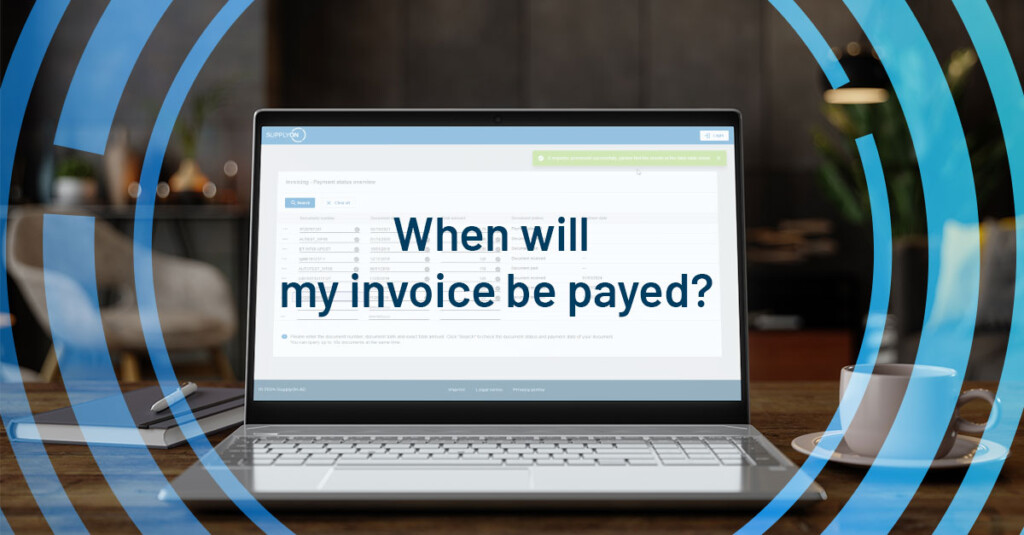Skip to content
On March 22, 2024, the Growth Opportunities Act was passed by the Bundestag and Bundesrat in Germany. With the introduction of this law, the federal government aims to boost Germany's attractiveness as a business center.Part of the Growth Opportunities Act is the introduction of mandatory eInvoicing in Germany. Domestic invoicing is to be digitized through the gradual introduction of electronic invoice formats. The clear goal: no more paper and no more PDFs.Two standard formats have been defined for electronic invoices: X-Rechnung and ZUGFeRD.X-Rechnung is a pure XML format and has already been known in the business-to-government environment for a few years.ZUGFeRD, on the other hand, is a hybrid format. Here, a human-readable and interpretable PDF invoice is embedded in a machine-readable XML file.An overview of the exact timeline for the introduction and who is affected and when:From 2025, all companies must be able to receive e-invoices in the formats defined by the government. Regardless of company size or turnover.In 2027, only smaller companies with an annual turnover of less than 800,000 euros will be allowed to send PDF and paper invoices.From 2028, these formats will no longer be permitted. X-Invoice and ZUGFeRD invoices will then be the new standard. The use of alternative electronic invoice formats remains permitted as long as the formats are compliant with EU standard EN16931.EDIFACT was controversial for a long time. Business associations have called for this transmission channel to be retained. The government has complied with this request and continues to allow EDI as a transmission channel - subject to the following conditions: EDI data formats must comply with EU standard EN16931 and a bilateral agreement between sender and recipient, i.e. customer and supplier, is required.Unlike other countries, Germany has decided against a central government platform for the eInvoicing model itself. Invoices must comply with the new formats, but the transmission channel can be chosen freely. Germany is therefore taking a different approach to countries such as Italy, where all invoices must be sent via a central government platform.The introduction of mandatory eInvoicing in Germany serves as preparation for the planned EU reform VIDA. VIDA stands for "VAT in the Digital Age" and is an EU initiative. According to the current schedule, from 2028, EU invoices exchanged between two EU countries will only be permitted in a structured and machine-readable format, i.e. EN16931-compliant.At the same time, the introduction of a standardized tax reporting system is planned via VIDA. The EU plan envisages the introduction of central tax reporting platforms at both national and EU level. Companies in each EU country will report their tax data to the national platform, which in turn will forward the data to the central EU portal. For Germany, e-invoicing therefore forms the basis for the introduction of the standardized tax reporting system as part of VIDA.SupplyOn is currently developing an invoicing add-on for Germany that will make it possible to process 100% of invoices received within Germany - regardless of whether the supplier is registered with SupplyOn or not. In addition to receiving the invoices and converting them into a desired target format, SupplyOn also takes over the complete validation of all invoices against previous documents such as the purchase order. SupplyOn can also enrich additional invoice data. All with the aim of achieving the fullest possible automation of incoming invoices on the customer side with a dark posting rate of over 90%.

SupplyOn joined over 4,000 attendees at the 2024 Gartner Supply Chain Symposium/ Xpo in sunny Orlando. Together, we were all on a mission to connect and gather knowledge and insight about the latest supply chain trends and technology to bring resiliency to their organization's supply chain. These are my 5 key takeaways from this inspiring event:Resilience & Risk: The supply chain has always been challenging and fragile, even before the global pandemic. Still, today, disruptions have become more frequent and severe. Analysts advise making changes in supply chains to depart from an “antifragile” state. There must be a focus on resilience and risk management while adopting proactive strategies to achieve resilience.AI/Data-driven Decision-Making: Accurate, up-to-date data has always been critical for supply chains. Organizations must harness the power of data analytics to gain actionable insights, optimize operations, and drive informed decision-making at every level of the supply chain.Digital Transformation: Organizations must fully embrace digital transformation in their supply chains. Technology must be leveraged to enhance visibility, agility, and efficiency across the supply chain.ESG/Sustainability: In my opinion, the US has been slower to move forward with ESG requirements, but this topic is gaining traction, especially as global requirements are impacting the US in multiple ways. Gartner highlighted that ESG is growing recognition within the supply chain. Beyond being kind to our planet, it is clear, organizations must reduce carbon footprint, ensure ethical sourcing practices, and promote social responsibility in order to remain competitive in the global marketplace, while reducing costs.Partnerships: Partnerships are essential for growth and collaboration within the supply chain. Forging strategic alliances with suppliers, customers, stakeholders, and solution providers is critical to driving innovation, mitigating risks, and creating shared value.Partnering with SupplyOn can transform your supply chain to become resilient.SupplyOn offers a comprehensive suite of digital supply chain solutions that align with the key takeaways from this latest event. For over 20 years, SupplyOn has been partnering with organizations to accelerate their digital transformation journey, enhance resilience, promote sustainability, foster collaboration, and leverage data-driven insights to drive competitive advantage in today's dynamic business landscape.

How should complex supply chains be designed so that they are resilient to risks of all kinds and adapt agilely to dynamic market conditions? How can a cost-efficient procurement strategy be implemented that leads to tangible cost savings thanks to intelligent demand bundling and optimized operational procurement processes? How can the interaction with suppliers be optimized so that both sides benefit from maximum efficiency and transparency? One of the key prerequisites is the seamless integration of the entire supplier network into your own business processes - end-to-end via just one central platform.Discover here how an global player in the automotive supply industry managed this balancing act - even though the organization was characterized by a high degree of inhomogeneity due to numerous takeovers. In the course of this project, a uniform IT infrastructure was created and standardized processes implemented for numerous single entities with large differences in terms of degree of digitalization, process design and IT landscape.The first strategic decision on the path to harmonization was to replace the heterogeneous IT system landscape with the company-wide introduction of SAP S4/Hana. It quickly became evident that the harmonization of internal processes and systems would be only the first step and that the supplier processes, which until then had largely been run via Excel sheets and e-mail, would also require optimization. This led to the second strategic decision: to use the migration to digitize and automate collaboration with suppliers at the same time. An established industry solution and a partner with extensive experience in the automotive sector were required here.SupplyOn was chosen for several reasons: Firstly, because of its decades of experience in the automotive business and the resulting numerous best practices. Secondly, because of the comprehensive process coverage and the ability to handle all supplier communication via one platform. And thirdly, due to the high number of connected suppliers and the associated overlap with the company's own supplier base.Reduce complexity with SupplyOnMixed scenarios with several providers were also examined during the selection process, but these were quickly rejected. Not only because external consulting companies such as Gartner clearly spoke out against them, but also because the advantages and synergy effects of a centralized solution were obvious to all parties involved:for suppliers: centralized access to all processes and datafor everyone: no additional and superfluous interfaces that would need continuous updating and be a constant source of errorsAnother advantage of SupplyOn for the customer was the fact that the complexity of the SAP project could be reduced, as SupplyOn offers some of the S4/Hana functionalities including supplier integration as standard. This eliminates the need for additional supplier connections to SAP and customizing, which saves the customer time and money with every SAP update. This applies, for example, to the VMI and complaints process as well as the sourcing process. The target scenario: an end-to-end digitalized world instead of Excel messThe customer's goal was to extend its internal SAP processes end-to-end to the supplier and create a seamless data flow from the internal systems to the supplier and back again - globally, for all plants, for all supplier-related processes, for all suppliers, across departmental and company boundaries. Where Excel sheets were previously exchanged, in future data will be sent directly from the internal systems to the supplier - and the return processes will be correspondingly seamless.This starts with the approval process for a new supplier and extends across the entire supplier lifecycle in all strategic and operational matters - from development and series production through to phase-out.The processes in detailSupplier qualification: The starting point of a customer-supplier relationship is the qualification and approval of the supplier. SupplyOn maps this process, taking into account specific regions and commodities. Upon approval, the supplier is classified and the supplier data is transferred to the internal SAP S4/Hana.Supplier master data management: All relevant data that characterizes a supplier is collected here - contact details, plants, production capabilities, certificates, audit results, classifications, approvals, contracts, etc. A duplicate check rounds off this service to ensure that a unique data record is attributed to each supplier.Sourcing of production material - including technical feasibility check: In addition to the price and commercial conditions, numerous other aspects can be queried during the inquiry process and other divisions can be integrated into the process, for example the development or quality department.Sourcing of indirect materials: The main aim here is to structure and standardize processes throughout the company, in particular to bundle volumes across the entire organization (demand pooling), adhere to compliance guidelines and prevent maverick buying.Start of series production: Standardized processes such as APQP or PPAP can be used to check readiness for mass production, ensuring a smooth ramp-up.Procure-to-pay: An end-to-end process from requirement to invoice enables a highly efficient, largely trouble-free and error-free supply chain. Subsequent processes are based on predecessor documents, which not only eliminates manual effort but also minimizes potential input errors.Supplier lifecycle management: In day-to-day collaboration, SupplyOn can be used to map a permanent control loop that aims to continuously optimize processes and products. The initiative does not originate exclusively from the customer. The supplier can also make suggestions for improvement and initiate changes. This is made possible by a collaborative approach in both directions.Audit Management: Both existing and new suppliers can be qualified and categorized here. The result is saved in the Business Directory. This makes it transparent for everyone what status the supplier has: "preferred", "standard" or "on hold". From there, the supplier can be efficiently developed further.Performance management: Performance data from several sources - from the SAP system, from SupplyOn and from external data providers - is bundled here and displayed to the supplier in a consolidated way for targeted performance improvement. At the same time, scoring is calculated from this data and made available internally, for example to Purchasing and Quality Assurance. This creates full transparency across departments at the level of parts, component lists and suppliers.Complaint management with action tracking: Here, errors are analyzed in a structured manner and resolved systematically - in a way that not only solves the current problem, but also ensures that repeat errors are avoided thanks to process or system adjustments.Risk management: By integrating external risk data providers, threatening situations - natural disasters, crisis hotspots or similar - can not only be identified very quickly, but it is also possible to immediately analyze which plants and parts are affected in order to immediately find solutions and alternatives for potential shortfalls. This makes the company more resilient to risks of all kinds and gives it completely new options for managing and responding to escalation situationsThe interlinking of all these supplier processes via one platform provides insights that were previously not achievable in the silo structure. Processes can be optimized end-to-end for the first time. To give an example, a buyer can no longer enquire about a supplier that has been set to "red" by the quality department. Or they can initiate necessary downstream processes with system support during the sourcing process.Implementation and rolloutA pragmatic approach was chosen for the implementation in order to get up and running quickly: Processes that do not necessarily require backend integration were started immediately via the web interface. These include, for example, the sourcing and complaints process. The interface to the backend systems is planned for a later date.As the S4/Hana rollout at the customer extends over several years - 160 plants are affected worldwide - this approach offers the major advantage that SupplyOn use can be started immediately in all plants, regardless of the status of the SAP rollout. At the same time, the integration of processes that are only manageable from the backend was tackled immediately.On the supplier side, SupplyOn takes care of all the necessary steps to get the 3,000 strategically important suppliers up and running quickly. This includes, for example, a comprehensive communication package, a specific training concept and support for suppliers during registration and day-to-day use. In the long term, a further 7,000 suppliers are to be connected in order to benefit from digitized processes in the long-tail area as well.Strategic goals achieved with SupplyOnIncreased competitiveness through the rapid introduction of proven, industry-standard end-to-end processes with suppliers, which SupplyOn continuously develops and adapts to new requirementsIncreased resilience to risks and in escalation and crisis situationsIncreased agility in order to be able to react quickly to changing economic conditions. Also rapid integration of other acquired entities.Improved cross-departmental collaboration between purchasing, quality management, finance and logistics through the use of one central platformReduced purchasing costs through intelligent bundling of demands across several areas.Higher product and process quality through close involvement of suppliers in improvement processes - including those initiated by the supplierLess frictional and administrative effort thanks to a holistic approach: everything from a single source and all processes via one system

With 100% of processes digitized and automated, a supply chain is a dream for every supply chain manager and the aim of many companies for many years. But why do so few reach the final goal of 100%? In the second episode of Inside Supply Chain, we get to the bottom of this question and also provide the solution - the 3+1 approach.On the home straight: With 80% so close and yet so far awayTaking a look at the example of a global company: Millions of transactions are processed annually in over 60 countries and in 20 different languages. As a result, digitization poses various challenges.Rare contact: The greatest difficulty lies in including business partners in the digital processes with whom only sporadic contact. According to the Pareto principle, these make up around 20% in most companies.Security gaps and the use of different communication channels: Due to the absence of regular exchange, communication often happens via channels such as telephone and e-mail. Not only is this inefficient, but security aspects also play a central role here. Especially in times of data and transactions protection being a top priority.Incorrect master data: If there is no regular contact, contact data is often incorrect or even missing - from changing contact persons to structural changes in the company. There are many reasons for insufficient data quality with infrequently contacted business partners.Increasing demand for compliance and fulfilling stricter ESG regulations: A 100% digital and automated process appears to be essential to ensure not only the efficiency but also the security of the supply chains.Achieving success with the 3+1 approachThe digitization of supply chain processes require not only technical solutions, but also a clear methodological structure. In this context, SupplyOn applies the 3+1 principles, which have proven to be a key strategy for an effective and secure conversion of the previously non-digitalized 20% of the supply chain processes.Principle 1: The transactional approachThe first principle, the transactional approach, extends further than the pure technical use and focuses on the targeted establishment of connections. Here any communication connection is only activated when essential for the process. This means a targeted reduction in unnecessary interfaces. It not only creates efficiency, but also minimizes potential vulnerabilities for security risks.Principle 2: Individual responsibilityThe second principle emphasizes individual accountability in gathering information. Instead of centralized data collection, the responsibility for researching and providing the required information lies with the respective parties. This not only promotes transparency, but also efficiency in fact-finding and reduces redundancies.Principle 3: Data clearing after each transactionThe third principle recommends consistent data clearing after completed transactions. Deleting contact data right after the transaction, ensures that only current and valid data is used for future business operations. This step is not only relevant from a data protection perspective, but also contributes to the quality of digital supply chain processes.The "Plus 1" principle: Monitoring and continuous improvementThe final step, usage monitoring and continuous improvement, closes the circle. It enables the analysis of past transactions, the identification of patterns and the continuous development of the system. By systematically evaluating the processes, weaknesses can be identified, security mechanisms optimized, and efficiency further increased. This iterative approach ensures that digital supply chain optimization is not seen as a singular measure but is continuously adapted to changing requirements.More than just closing a gapThe goal of these measures is not only to close the 20% gap, but also to provide incentives for users to further adopt digitization tools.This initiative also represents a pioneering step towards a digitally optimized supply chain structure in the context of global business activities. It demonstrates that the complete digitization of supply chains are not just steps towards increasing efficiency but also essential for closing security gaps. A consistent implementation of the 3+1 design principles focuses on efficiency, sustainability and security. It also creates a motivating incentive for partners and users to actively participate in this digital transformation.We are convinced that achieving 100% digitization brings challenges, but it is worth facing up to them: The result is a strengthening of competitiveness through increased efficiency - and thus securing the future viability of our customers.

In many companies, the accounting department often runs out of time to concentrate on value-adding activities. Instead, a lot of effort is invested in processing incoming inquiries. Time that is not spent on important tasks. Accounts Payable specialists are well trained and often solve complex financial issues. In most cases, the supplier requests are just about when an outstanding invoice will be paid. Checking the processing status takes up a lot of time, resources and ultimately costs companies unnecessary money.Together with Bosch as a pilot customer, SupplyOn has developed a new Invoicing add-on that provides all suppliers with information on the processing status of their invoices with just one click. The "Payment Status Overview" add-on solves this task via a freely accessible web portal that does not require a login. By entering the invoice number, amount and date, the information is retrieved directly from the customer ERP system and displayed to the user. This allows them to see whether the invoice has been successfully received, is still being processed or the payment is already planned. Any rejection is also displayed in the overview. Further status messages are also possible. Optionally, the payment date can also be retrieved from the customer ERP and displayed to the supplier. The added value of this solution benefits suppliers as well as customers. The resulting advantages include:Suppliers receive a transparent status of the processing status of their invoices at any timeYou no longer need to check the payment date with the customer's supplier accounting departmentFor customers, the solution offers a significant reduction in incoming inquiriesA considerable amount of time and effort can be saved in the accounts payable department this wayThe highlight of the Payment Status Overview solution is its free availability to all suppliers. No registration or password entry is required. By simply entering the necessary document data, it is ensured that no unauthorized access occurs, as only the supplying company and the customer are in possession of this data.Here is a business case calculation from the customer's perspective:Assuming it takes about 10 minutes to process a request - from opening the e-mail, reading the request, searching for the processing status of the invoice, and writing a reply to the supplier. In addition, an hourly wage for a bookkeeper of €30 per hour is assumed. As a result, the cost per inquiry is €5. With 20,000 inquiries per year from suppliers regarding the invoice status, this results an annual saving of €100,000.Further functionalities for the add-on are planned for 2024. These include the ability for suppliers to send specific queries to customers via the web portal in case of ambiguities. This information will be processed and answered by the customer in a targeted manner.

Like most people this year, I had every intention of writing about the New Year in January, but honestly, the busyness of last year never stopped; it carried over not only from last year, but from 2022, through the holidays, and into this year. Now I feel like I blinked and landed in February. It seems only fitting to write about this new year during the Lunar New Year, especially since this is the Year of the Dragon. Dragons are a revered symbol of power and thought. It is considered the luckiest sign in the Chinese Zodiac. If you know me, then you know my pension for dragons. This year, the mythical creature is paired with the element of wood, which is said to bring good fortune, action and growth. What better way to get started on my old 2020 goals that have reemerged from lockdown and new goals than to blaze a new trail on the heels of a fierce dragon? After the pandemic crisis came to a screeching halt, organizations had to scramble and implement stopgap measures just to get by. When we emerged from the pandemic in 2021, it was paralyzing, with an uncertain world around us while we figured out the new normal. In 2022, organizations began to share more about the challenges they were facing and put effort into understanding new ideas and solutions that could change their current state. In 2023, I saw organizations get more serious about change, especially around digital transformation strategies and initiatives. Now, finally, 2024 is the year when organizations will be driven to change.10 success factors for digital supply chain transformationHere are my mission-critical, key factors for successful supply chain digital transformation in 2024 and beyond:True leadership: Digital transformation is more than a one-time mandate from headquarters; it is a true commitment. It requires an ongoing effort from a C-level leader to not only educate and drive this change, but also to bring their best street fighting skills and rocket science thinking cap to ultimately make the change happen.Strong team: Assemble the best teams that get it and share the vision, passion, and drive to work together to understand and document the current situation, research solutions, build a business case, plan deployment, lead internal and external change management, launch, and work to continually improve processes and the solution.Partnership: Digital transformation is an investment in every sense of the word. The right supply chain collaboration tool is a complex solution that connects data from multiple data points. It requires analysis, planning, design, mapping, configuration, testing, and training. To make this transformation a success, it's critical to choose a solution provider that can guide, educate, support, and share your vision and mission. One that will be with you before, during and after.Be open: With any type of change, it's critical to be open to different ideas, processes, and solutions. The digital world moves at lightning speed and has changed for the better. It can be hard not to get stuck in the past with old technology that maybe didn't work well and outdated concepts that are no longer relevant. Step back, explore, and look at the big picture to find a new way.Understand ROI: Return in Investment (ROI) is both tangible and intangible. It will also vary from one organization to the next. There is no quick ROI answer for a solution; it's going to take some work to build it so it's real and measurable. For the tangible part, the starting point must come from existing data and be aligned with financial goals. For example, simple goals might be to reduce inventory or emergency freight costs. This is easy enough to do the math with current costs and then figure out the reduction targets. The intangible ROI can be much harder to measure, but the benefits can be more impactful. For example, reducing manual effort could result in a happier team that can be proactive rather than reactive, which in turn could result in better planning, optimized build schedules, less overtime, better pricing, less downtime, more on-time deliveries, and some very surprising cost savings. For the intangible ROI, talk to your team and create an estimate. Then align that with some of their goals.Budget: Digital transformation is an investment and requires money to make it happen. A realistic budget with a twenty percent contingency is optimal. It's also critical to look beyond the annual fee for the solution and understand that there are not only external implementation costs, but also internal resources required to implement new solutions, such as a one-to-one ratio of days from your solution provider. It's also important to know what's really included in the package beyond the bottom line price tag. Also, do not forget to budget for change management if you want the project to be successful.Change Management: Implementing a new solution without a change management strategy is like buying a car without wheels and expecting it to go anywhere. Change management requires a solid plan that includes clear goals and messaging, an internal and external portal with information, training and progress. It requires a strong kick-off presentation from leadership and an ongoing, scalable dialogue both internally and externally with stakeholders.The right solution: Finding the right solution and tools takes some time and research. Make sure it meets your current needs, but is also scalable for your future. Configurable is definitely better than custom, as the latter can turn into something that cannot be updated later. Continual enhancements and updates are also a plus to avoid painful and costly migrations in the future. Make sure it works with any ERP and 3rd party solution. It should have plenty of support options. Most importantly, it should be easy to use—after all, it's no good if it's not used.Realistic goals: While there is an urgency to digital transformation, the process takes time and internal teams are working on this mission in addition to their full-time jobs. Depending on the day-to-day business, the research phase alone can have many starts and stops. Planning, budgets, internal approvals, legal, alignment, and preparation can also be delayed. Faster isn't better if the solution isn't right, the implementation isn't done right, and the whole project lacks change management.Solid roadmap: It's easy to get excited and geeked out about digital transformation. Don't skip the planning stages. Create a solid roadmap for your journey, and know that it's okay to make mid-course corrections if necessary. Be flexible, open and mindful.2024! Ready. Set. Go in like a dragon.

Companies that want to do business in China and work with local suppliers through their local office quickly realize that invoicing is much more complex than in Western Europe or North America. It's time-consuming, labor-intensive and has many unique requirements. In the future, this complex process will be completely digitized—and somewhat simplified.Fapiao & Golden Tax: an introduction to Chinese invoicingBut let's start at the beginning: In China, domestic invoices cannot be sent directly from the supplier to the customer. Instead, special tax hardware is required, such as a so-called tax control USB disk. In some cases, paper receipts are also required. Most importantly, companies must use state-certified providers as intermediaries and pre-register their invoices with the central tax authority using the Golden Tax System (GTS) software.An invoice issued and registered with the tax authority is called a Fapiao. In the classic Fapiao process, suppliers first submit invoice data to the Golden Tax System. These invoices are pre-validated by government-certified vendors to ensure, for example, that all tax data has been entered correctly.An invoice issued and registered with the tax authority is called a Fapiao. In the classic Fapiao process, suppliers first submit invoice data to the Golden Tax System. These invoices are pre-validated by government-certified vendors to ensure, for example, that all tax data has been entered correctly.After successful validation, the system assigns a unique number to each invoice. Once this step is successfully completed, suppliers can print the invoice data with the assigned invoice number on a Fapiao paper receipt and send it to their customers. These Fapiao receipts are special formatted papers with a seal and are available in blocks from the State Taxation Administration (STA). To issue an invoice, suppliers must obtain a sufficient number of Fapiao paper blocks in advance.If this procedure is not followed, suppliers will not be allowed to issue VAT invoices.On the customer side, the Fapiao document must be automatically recorded, evaluated, and compared with existing data in the GTS upon receipt. This is a tedious, error-prone, and cumbersome process that often requires a lot of manual verification.The following video explains the old paper-based process in more detail: From paperless to "Fully Digitized eFapiao"Some time ago, the paper-based Fapiao process was transformed into a paperless version, although this is not widely used in China. In the paperless process, the procedure remains the same, but the paper-based Fapiao receipt has been replaced by a proprietary digital data file. However, the cumbersome process with all its drawbacks has not changed.The Chinese government has therefore decided to convert the classic Fapiao process, whether paper-based or paperless, into a fully digitized version, the so-called "Fully Digitized eFapiao". This is based on a new central platform where invoices can be exchanged between suppliers and customers in a fully digital format.To comprehensively test the new Fully Digitized eFapiao process, the Chinese government launched a pilot in 2021 in several major cities and regions, including Guangdong, Shanghai, Foshan and Inner Mongolia. Meanwhile, the pilot operation has been extended to further regions.Here are some details about Fully Digitized eFapiao:Fully digitized: Fully Digitized eFapiao is a new type of electronic invoice. It has the same legal meaning and use as the conventional paper Fapiao, but without the paper.No copies: Unlike the traditional Fapiao, copies are no longer necessary. This greatly simplifies the process. The paper-based process involved multiple copies of the Fapiao receipt.Reduced invoice size: Only 17 data fields are required.No pre-registration: No need to purchase paper blocks in advance. The Fapiao invoice number is assigned directly by the central platform.No special tax equipment: Enterprises do not need to purchase special tax control equipment such as USB disk, tax control USB disk and Tax UKey in advance. Instead, they can issue the Fully Digitized e-Fapiao directly through the national e-invoice platform.Diversified input channels: In the current pilot phase, it is possible to issue invoices directly through the central platform. Soon, this will be extended to digital terminals and mobile applications.Reduced workload: Scanning and OCR processes are no longer necessary on the recipient side, as paper and PDF invoices are no longer required.Always up-to-date with SupplyOn InvoicingSupplyOn Invoicing has supported the classic Fapiao process for several years. This applies to both the paper-based and paperless versions. The new Fully Digitized eFapiao process is also supported by SupplyOn: All suppliers from the pilot regions in China can also use SupplyOn Invoicing to work with their customers in a tax-compliant manner.The advantage: Invoices are checked and validated in advance by SupplyOn against order or other demand data. If there are any errors or discrepancies, corrections can be made before the invoice is submitted to the tax authorities. Time-consuming cancellation or credit processes are a thing of the past. Suppliers can rest assured that invoices meet customer requirements and have been verified against country-specific requirements. In return, purchasing companies only receive invoices that have been validated in advance by SupplyOn Invoicing and match the purchase order or goods receipt. This allows for direct posting without any manual effort.As a first step to support the pilot phase of Fully Digitized eFapiao, SupplyOn has provided the pilot suppliers with the successfully validated invoices in a new download format. This format is accepted by the new central platform and can be directly uploaded.From now on, pilot suppliers can also use SupplyOn Invoicing to transfer the validated invoice data directly to a local, government-certified provider and thus to the central platform. A manual download is no longer necessary. We are also working on further simplifying the invoicing process for purchasing companies.Our customers can rest assured: By using SupplyOn Invoicing, they are always up to date with the latest developments in China, as we promptly implement all relevant Chinese government requirements in our solution.

In a dynamic industry like Aerospace and Defense, where precision and efficiency are paramount, every process counts. And one of these processes is the management of non-operational parts that cannot be installed in an aircraft or helicopter due to a need for revision, repair, overhaul, or the like — the so-called Repair Orders & Overhaul (R&O).Leonardo, a major aerospace, defense and security company, set out to fill the gaps to efficiently manage the specifics of this process, seamlessly integrated into a digital platform. But what really sets this endeavor apart is the idea of community. As part of the BoostAeroSpace community, Leonardo and another major aerospace OEM joined forces to transform the repair and overhaul ordering process for the benefit of the entire community as a pioneering co-leadership initiative.We sat down with Angela Marotta, Project Manager for AirSupply at Leonardo, to learn more about this extraordinary initiative and how Leonardo is benefiting from the new process:Repair Orders — a critical process in the aerospace industryAngela, could you please describe the role that repair orders play in Leonardo's business, how they have been managed in the past and what the limitations have been?The Repair and Overhaul process is a critical part of our strategic management and our customer services business, especially in our Helicopters and Aircraft divisions. We handle around 7,000 Repair Orders for Aircraft and 32,000 Repair Orders for Helicopters (for 1 year), involving about 600 suppliers. The process has four key steps: publishing, collaboration, acceptance, and execution of Purchase Orders (POs).While it all boils down to PO management, the first three steps have some unique characteristics when handling POs for R&O. These specifics were not fully covered by our previous solution. As a result, we had to manage some or all of these process steps outside of the portal.With a new and dedicated R&O process we wanted to increase the traceability of logistical movement of unserviceable parts, track negotiations, incorporate supplier quotations and enhance the status visibility of the R&O flow in general.It's fascinating to see the scope of the challenge, Angela. Why did Leonardo choose SupplyOn to address these issues?Our decision is in line with our company-wide strategy to use a single portal to collaborate with our suppliers on supply chain processes. And since 2017, this portal has been AirSupply by SupplyOn, the leading solution in the aerospace industry.Joint project for an industry-wide issueHow did this initiative to transform the management of Repair Orders become a joint project with another major aerospace OEM?When we selected in 2016 and implemented AirSupply to harmonize and advance our supplier collaboration on a group level, we also joined the BoostAeroSpace community in 2017. All community members are like-minded, innovative aerospace companies using this comprehensive, industry-specific supply chain solution.So, naturally, we discussed with both, SupplyOn and BoostAeroSpace, how we could extend AirSupply to support this process, both for our existing suppliers and for new ones coming on board. After all, the Repair and Overhaul process is a critical aspect of aerospace and defense. It follows the same rules for customers and suppliers across the industry. Customer support and service are paramount, and efficiency is essential for all.During these discussions last year, in 2022, another major aerospace OEM expressed great interest in transforming and integrating this process into AirSupply. We decided to work closely together on requirements, solution design, cost and testing. The very first co-leadership project among the BoostAeroSpace community members was born! Our common goal was to add value to the platform by implementing this key functionality for the aerospace and defense industry.For us at Leonardo, this project was a great opportunity to demonstrate our community and collaborative spirit: Internally, by aligning all of our business units around the request and identifying common requirements. And secondly, within the community, to verify how such a pioneering co-leadership initiative can become a great success. What are the essential elements required of a successful co-leadership project?Transparency in sharing information about common processes is key. But you also need an open-minded approach to solution design and a deep understanding of the impact of the process on all internal stakeholders. Last but not least, continuous collaboration with the procurement and customer support departments across all business units was critical to the success of the project.Project progress at LeonardoWhat is the current project status at Leonardo?The Repair and Overhaul Process solution has been released on AirSupply in April 2023 and is already up and running for the Helicopters Division since June 2023. We're currently working on the integration with backend of the Aircraft Division backend. This is set to be released in November 2023. The integration with the Electronic Division is then planned for 2024.Leonardo's onboarding policy is to enable all existing suppliers to use the new process and to take the opportunity to onboard new Repair Order suppliers.Can you tell us how this project has helped to address your initial issues, Angela?With the new Repair and Overhaul process, Leonardo aims to accelerate procurement time-to-market, ensure on-time payments, and improve cost efficiency in our Customer Services business. It aligns with our company's success drivers, which include digitalization, traceability, efficiency, standardization, and supplier collaboration. And what is next for this project, is there still work to be done?The solution released in April 2023 is only a first version. We have additional requirements planned for development in 2024. In the meantime, our goal is to expand the supplier perimeter and extend the solution to all Leonardo divisions.Community collaboration as driving force for innovationHow do you think you can influence your fellow community members to adopt this process in their organizations? What are your plans here?All BoostAerospace community members meet every year in a different location for a “Customer Day”. At last year’s Customer Day in Paris, we jointly presented our initiative together with the other participating aerospace OEM. During this presentation, we demonstrated how this solution enhances the AirSupply suite of functionalities.Technically speaking, we have implemented a set of enhancements that complement the existing Purchase Order process, allowing users to access dedicated screens to efficiently manage Repair Orders.This way of working has proven that new processes can be implemented efficiently while minimizing the risks of regression to the existing core process.Angela, looking back, how vital is collaboration in the community for a successful solution?Collaboration with the community and with SupplyOn is the key to success for Leonardo. The exchange of information, comments, and different perspectives ensured that we found an efficient and smart solution.Most importantly, this project has been a valuable lesson for the community in terms of working together on project management and addressing requirements in innovative ways. Are there additional points you would like to see the community tackle in the future?Yes, we'll be discussing additional requirements related to report management for the Repair and Overhaul process and to fine-tuning the solution for quote management. One last question, Angela: do you have any other plans for how you'd like to develop supply chain management at Leonardo that you can share with us?Absolutely. At Leonardo, we believe in sharing our needs with the community to further improve the platform. How to make it even more user-friendly and attractive for suppliers is an ongoing discussion, and we're eager to collaborate to achieve that. Thank you, Angela, so much for your valuable insights! Looking forward to seeing these plans come to fruition in the coming years. All the best to you and your projects.

In the dynamic business landscape, digital transformation has emerged as a game-changer. As organizations try hard to stay competitive and relevant, it's no longer a question of if but how and when they should embark on their digital transformation journey. However, achieving a return on investment (ROI) from these efforts is not a given; it requires a strategic approach. Here is a brief summary, after 14 years in the industry, of the five building blocks to consider when embarking on a digital transformation initiative to ensure and deliver the ROI you expect.1. The right scopeOne of the fundamental drivers of digital transformation ROI is defining the right scope. Without a clear understanding of what needs to be transformed and why, your efforts can become unfocused and wasteful. Start by identifying specific pain points, goals, and the expected outcomes. This will allow you to prioritize and allocate resources effectively, ensuring that your digital transformation initiatives align with your business objectives, and most importantly, it allows you to track where the ROI is coming from.2. When the decision is made: go all in!Digital transformation isn't just about embarking on the journey; it's about ensuring you reach the destination successfully. One critical driver of digital transformation ROI is completing the transformation and fully digitizing the processes.When a project remains incomplete or certain processes aren't fully digitized, companies often find themselves in a challenging situation. They end up managing both the old, legacy systems and the newly digitized processes simultaneously. This not only leads to operational inefficiencies, but also dilutes the potential ROI.To maximize your digital transformation ROI, it's crucial to ensure that the transformation journey is comprehensive and delivers on the defined scope. This will not only streamline operations, but also allow your organization to fully leverage the benefits of digital technology, ultimately delivering the desired return on investment.3. If you don’t get started, you’ll move backwards: pilots as a means to test, learn and capitalizeDigital transformation doesn't have to be an all-or-nothing endeavor. A successful approach often involves starting with pilot projects. These smaller initiatives provide a testing ground for new technologies and processes, allowing you to test your assumptions, learn, and capitalize, before scaling up. Pilots also demonstrate the benefits of digital transformation to stakeholders, building trust and buy-in across the entire organization.4. Change management: bringing new solutions into usageSuccessful digital transformation is as much about managing people as it is about implementing technology. Change management is a critical driver of ROI because it ensures that your workforce is equipped to adapt to the new digital environment. Effective communication, training, and support mechanisms help employees to make a smooth transition and become advocates for the change rather than resistors.5. Managing the change: bridging the old and the newWhile change management sets the stage, ongoing management of the change is essential and requires a delicate balancing act. Digital transformation is not a one-time event, but an ongoing process. It's not just about defining the new processes post-digitization, but also about handling the past activities that were managed with the old processes.This includes defining the new processes, managing the legacy processes/non-digital methods, continuously monitoring the transition, and ensuring that value is delivered, even after the digitization project is finished.By successfully managing the change and bridging the gap between old and new processes, your organization can make the most of its digital transformation efforts and achieve a higher ROI, even when dealing with legacy activities. This holistic approach ensures that no stone is left unturned on your journey toward a more efficient and digitally empowered future. In conclusion, delivering ROI through digital transformation is attainable, but it demands a strategic and comprehensive approach. It starts with defining the right scope, gaining full commitment, and initiating pilots to validate your efforts. Effective change management ensures that your workforce is aligned with the transformation, and ongoing management keeps your initiatives on the path to success. By embracing these five drivers, your organization can not only navigate the challenges of digital transformation but also reap the rewards of a more efficient, competitive, and innovative future.
